Singapore’s mammoth new Sports Hub reaches completion
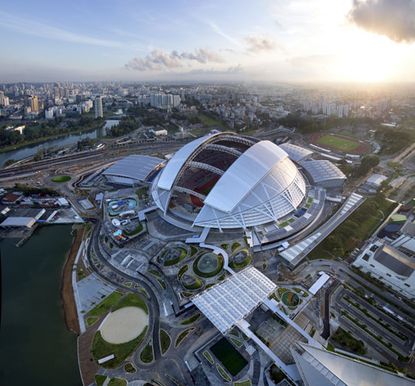
Singaporeans like to joke that there are only three things to do in Singapore: eat, shop and watch a movie. Any other kind of physical activity is studiously avoided on the pretext that it's too hot to do much more than walk very slowly from one air-conditioned mall to the other.
That said, the recent opening of the mammoth Sports Hub on the edge of the Kallang River should be enough to coax even the most reluctant residents out for some fresh air. Built on the site of the former Singapore National Stadium, the S$1.3bn complex dwarves Japanese architect Kenzo Tange's neighbouring Singapore Indoor Stadium on a scale that makes it visible for miles in every direction.
Arup sports architecture practice and Singapore-based firm DP Architects led a global team of engineers and designers that carried out this extraordinarily ambitious project. The 35-ha waterfront site presented many challenges, the biggest of which was its footprint, but the result is a network of facilities and complex infrastructures that fit together as a surprisingly harmonious, tessellated whole.
Dominating the complex is the new 55,000-seat National Stadium, a curvaceous shell with a retractable scarab-like roof. The dome spans 310m making it not just the largest spanning dome in the world, but also the world's first stadium with the capability to host athletics, football, rugby and cricket games all in one venue, converting from one field to the next (with adjustable seating) within 48 hours.
Abutting the stadium is the 3,000-seat OCBC Aquatic Centre, which houses three pools for competition, training and diving; the Water Sports Centre for elite training and racing; jogging path and fitness areas; the Sports Hub Library & Singapore Sports Museum; and, this being Singapore, a 41,000 sq ft water park complex of retail, food and beverage outlets.
Additionally, environmental concerns were incorporated into the infrastructure, including low energy, natural ventilation systems, a wetland feature, and bioswale filters that clean surface runoff water.
For a country that has, until now, lacked a comprehensive set of modern sporting facilities, the Sports Hub is proof enough that keeping fit is no longer a laughing matter.
Wallpaper* Newsletter
Receive our daily digest of inspiration, escapism and design stories from around the world direct to your inbox
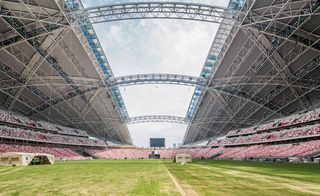
Built on the site of the former Singapore National Stadium, the S$1.3bn complex includes the new 55,000-seat National Stadium, complete with a retractable scarab-like roof.
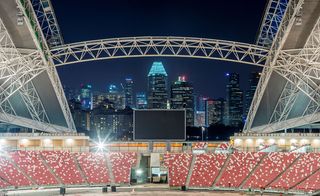
The dome spans 310 metres, making it the widest globally. It is also the world's first stadium with the capability to host athletics, football, rugby and cricket games all in one venue.
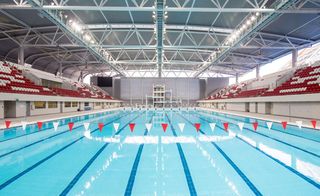
Next to the stadium is the 3,000-seat OCBC Aquatic Centre.

The Aquatics Centre houses three pools for competition, training and diving.
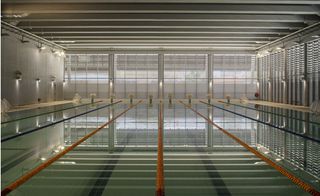
A separate pool has been dedicated to the local community.
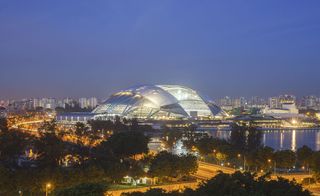
The complex also includes the Sports Hub Library, Singapore Sports Museum, a jogging path and various fitness areas.

A waterpark complex of retail, food and beverage outlets completes the entertainment hub.
ADDRESS
Singapore Sports Hub
2 Stadium Walk, Singapore 397718
Daven Wu is the Singapore Editor at Wallpaper*. A former corporate lawyer, he has been covering Singapore and the neighbouring South-East Asian region since 1999, writing extensively about architecture, design, and travel for both the magazine and website. He is also the City Editor for the Phaidon Wallpaper* City Guide to Singapore.
-
 Enjoy ocean and jungle bliss at Bespoke Tulum’s residences in Mexico
Enjoy ocean and jungle bliss at Bespoke Tulum’s residences in MexicoBespoke Tulum is an exclusive hospitality complex designed by Muro Rojo Arquitectura on Mexico’s Caribbean coastline
By Sofia de la Cruz Published
-
 In Van Cleef & Arpels’ high jewellery, the archival meets the au courant
In Van Cleef & Arpels’ high jewellery, the archival meets the au courantVan Cleef & Arpels pays tribute to its rich heritage with a captivating high jewellery collection
By Hannah Silver Published
-
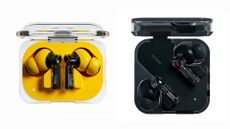 New Nothing Ear and Ear (a) earbuds: audio innovation with a retro nod
New Nothing Ear and Ear (a) earbuds: audio innovation with a retro nodNothing’s new Ear and Ear (a) earbuds, drawing inspiration from vintage portable hi-fi and packed with updates, help the company maintain its status as an audio innovator
By Jonathan Bell Published
-
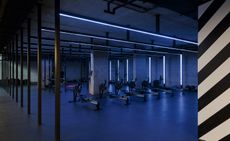 The best gyms around the world for design buffs in 2018
The best gyms around the world for design buffs in 2018By Mary Cleary Last updated
-
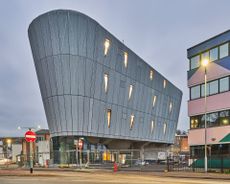 Skate park design goes to the British seaside with Guy Hollaway’s F51
Skate park design goes to the British seaside with Guy Hollaway’s F51F51 is Folkestone's brand new, dedicated, multistorey skate park, courtesy of the Roger De Haan Charitable Trust and Hollaway Studio
By Ellie Stathaki Last updated
-
 Community centre architecture redefined: Holborn House by 6a and Caragh Thuring opens
Community centre architecture redefined: Holborn House by 6a and Caragh Thuring opensHolborn House by 6a Architects and Caragh Thuring opens for the Holborn Community Association in London, bridging art and community architecture with people at its heart
By Ellie Stathaki Last updated
-
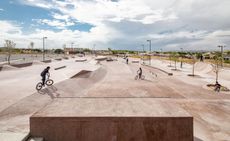 Pink concrete skatepark is a striking urban landmark in the Chihuahuan Desert
Pink concrete skatepark is a striking urban landmark in the Chihuahuan DesertA team of architects, landscape designers, sociologists and urban planners came together to create La Duna, a fine example of skatepark architecture on the northern border of Mexico
By Ellie Stathaki Last updated
-
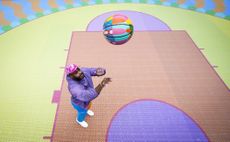 Last chance to play: Yinka Ilori's colourful basketball court in Canary Wharf is a slam dunk
Last chance to play: Yinka Ilori's colourful basketball court in Canary Wharf is a slam dunkArtist and designer Yinka Ilori applied his signature colourful geometries to his design for this new public basketball court in Canary Wharf, London
By Rosa Bertoli Last updated
-
 Building muscle: London architecture walks and runs
Building muscle: London architecture walks and runsTry these London architecture walks and runs for some physical and intellectual edification
By Simon Mills Last updated
-
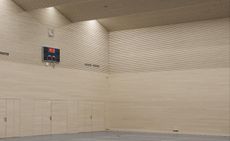 Janne Tuunanen captures modernist architecture of renovated Helsinki Olympic Stadium
Janne Tuunanen captures modernist architecture of renovated Helsinki Olympic StadiumPhotographer Janne Tuunanen captures the sharp modernist architecture of the recently renovated Helsinki Olympic Stadium in Finland in his latest series
By Ellie Stathaki Published
-
 Yinka Ilori’s colourful skatepark in France is a pillar of the community
Yinka Ilori’s colourful skatepark in France is a pillar of the communitySport, street art and community merge in Yinka Ilori’s skatepark in Roubaix, project that is part of Lille’s World Capital of Design 2020
By Rosa Bertoli Last updated